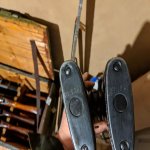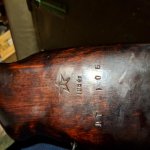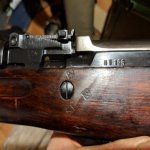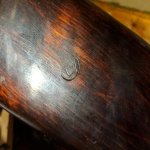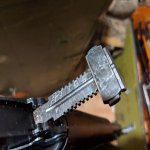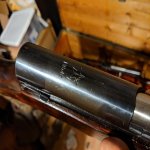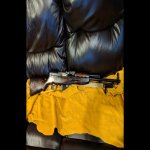To explore a little further on the suggestion made by gewehr76 that the EP'd stock plates are a possible indication of refurb, we can look to contemporary Chinese production for some potential insights.
The early Chinese guns are, for all intents and purposes, EXACT copies of the final, post 1954 soviet sks design. In fact the first 3-5 years of Chinese type56 production were overseen by soviet technical advisors. By all indications the Chinese followed the same exact manufacturing and finishing protocols that the Soviets did.
For every design, manufacturing, and finishing trait on the early Chinese guns, we see what amounts to essentially ZERO deviation from the Soviet standard. (Except for the difference in wood used for the stocks).
From this there is a very convincing argument to make that the absence of EP serials on the Chinese stockplates indicates that the same standard existed for newly manufactured Soviet guns.
This notion acquires further support with contemporaneous sks production in Romania: No ep's on stock plates being the norm on the Romaninan guns as well.
The early Chinese guns are, for all intents and purposes, EXACT copies of the final, post 1954 soviet sks design. In fact the first 3-5 years of Chinese type56 production were overseen by soviet technical advisors. By all indications the Chinese followed the same exact manufacturing and finishing protocols that the Soviets did.
For every design, manufacturing, and finishing trait on the early Chinese guns, we see what amounts to essentially ZERO deviation from the Soviet standard. (Except for the difference in wood used for the stocks).
From this there is a very convincing argument to make that the absence of EP serials on the Chinese stockplates indicates that the same standard existed for newly manufactured Soviet guns.
This notion acquires further support with contemporaneous sks production in Romania: No ep's on stock plates being the norm on the Romaninan guns as well.
Last edited:















































